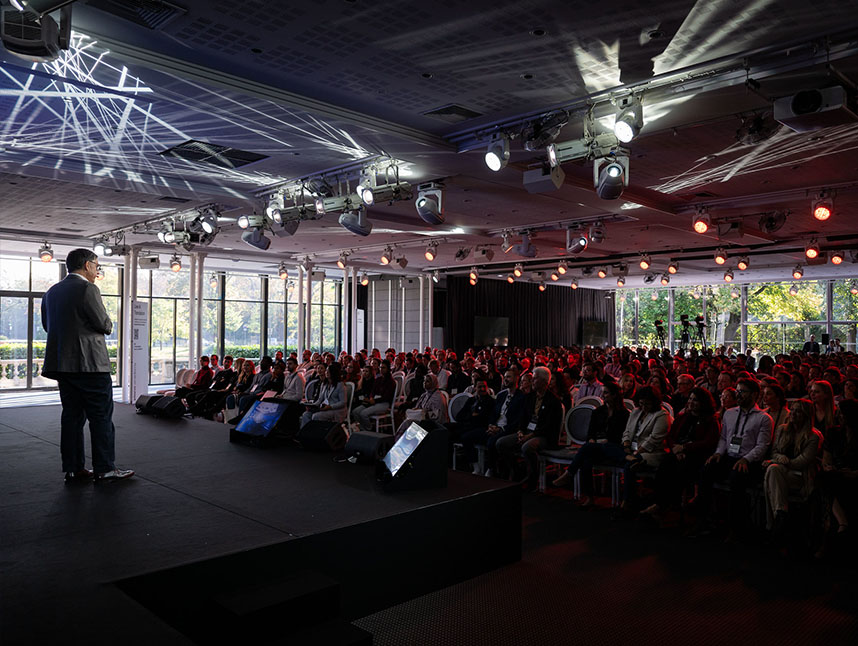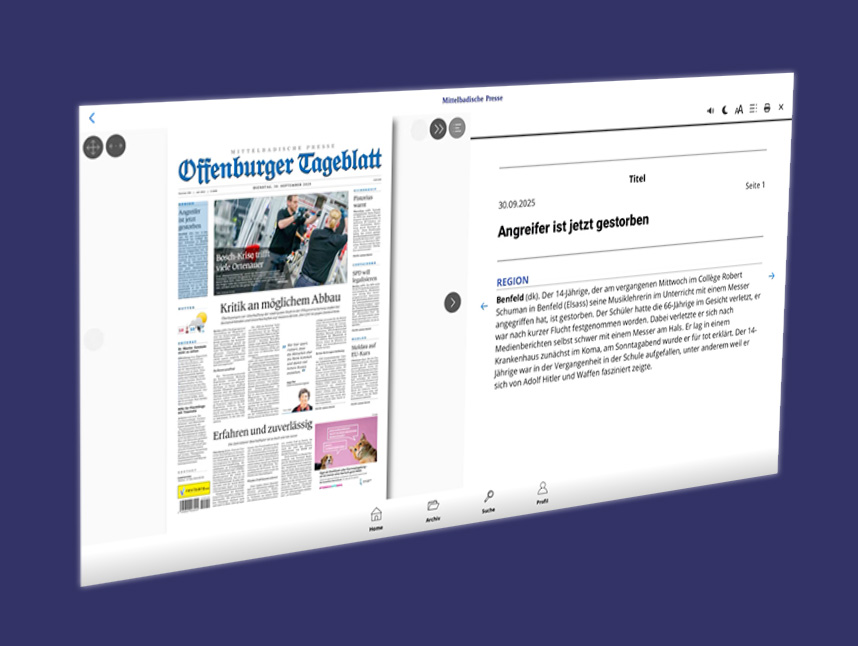How publishers successfully diversify their revenue sources : 3 recipes for success from practice
The media industry is undergoing profound change. Publishers are facing economic uncertainties, technological upheaval and changes in user behavior. The decline in traffic from social networks and the slower growth of digital subscriptions are particularly serious.
According to the Reuters Digital News Report scheme 42% of publishers invest in new products for younger target groups. 20% see international expansion as another promising product development opportunity. This shows that “keep it up” is no longer an option — the publishing industry must rethink its business models.
The era of one-sided revenue models is over. If you want to remain successful in the long term, you must rely on a diversified portfolio. In this article, we take a look at the industry's most pressing challenges, analyze successful diversification strategies and show concrete steps for action.
The 3 biggest challenges for publishers in 2025
1. Decline in social media traffic

Until a few years ago, social media was one of the most important sources of traffic for publishers. But the days when Facebook and X/Twitter were reliable click providers are gone. According to the Reuters Digital News Report, traffic from Facebook to news sites is plummeted by 67% in the last two years. Twitter/X has Generates 50% less publisher traffic.
The effects are serious:
- Many news sites experience a Decline in advertising revenuebecause fewer users are accessing their content.
- Reaching readers via social networks is becoming more expensive, as paid advertising is often the only way to achieve relevant reach.
- Young target groups consume news more via TikTok, YouTube and messenger services than via classic news feeds.
Approaches to solutions:
- Strengthen your own channels: Newsletters, push notifications and other direct relationship channels are becoming increasingly important.
- Use SEO as a core strategy: Organic search results via Google Discover & Co. are more important than ever.
- Build communities: Promote closed groups or own platforms for reader interaction.
- Include alternative platforms: YouTube and TikTok should not be seen as competitors, but as distribution channels.
2. Dependence on digital subscriptions

Digital subscriptions were long regarded as the future of journalism. But market development shows: Growth is slowing significantly. According to the Reuters Digital News Reports report 73% of publishers see a sharp or moderate increase in digital subscriptions, but 28% see stagnating or declining figures.
Why is that problematic?
- The market is saturated: Many readers already have digital subscriptions and do not want to use any additional paid offers.
- Varying willingness to pay: While some target groups are willing to pay for in-depth journalism, others prefer free news.
- Competition from independent creators: Platforms such as Substack or Patreon enable journalists to offer their own paid newsletters or podcasts that compete with traditional publishers.
Diversification strategies:
- Micro subscriptions: Instead of monthly subscriptions, pay-per-article models or daily passes could be tested.
- Personalized offers: AI-powered paywalls can approve or block articles based on user interests.
- Bundle models with partners: Collaborations with streaming services or specialist publishers could attract new subscribers.
3. Impact of AI and technological disruptions

Generative AI is changing the way content is created and consumed. 87% of media companies see AI as a transformation factor for their editorial offices. Search engines such as Google also emphasize that it is not the origin of content (human or AI-generated), but its quality and relevance for users that determines the ranking. High-quality journalistic content therefore remains competitive as long as it meets established SEO and quality criteria.
Risks for publishers:
- Readers use AI assistants (such as ChatGPT) directly instead of visiting news websites.
- Google and Bing are already testing “AI overviews,” which answer questions without users having to click on a source.
- AI can generate fake news that is difficult to distinguish from journalistic reports.
Strategies for publishers:
- Use AI to support: Automated transcriptions, summaries, and image editing speed up workflows.
- Hyperpersonalization: Smart recommendations and individual news feeds improve reader engagement.
- Trustworthy content as a USP: Readers pay for exclusive analyses, opinion pieces and background reports that AI cannot provide.
Examples of successful diversification Successful publishers are increasingly using innovative strategies to diversify their business models and tap into new sources of revenue. Three companies that have implemented this particularly successfully are the Madsack, Axel Springer And the Börsen-Zeitung. Their different approaches show how publishers can rely on digital transformation, technological innovations and target group-specific content in order to grow sustainably.
1 Madsack: Transformation from print to digital
Strategy: Die Madsack media group pursues a consistent approach for the future Digital-first strategy, which aims to gradually move readers from print to digital subscriptions without losing existing print customers. A central component of this strategy is Early discontinuation of printed editions in selected regions and the equivalent positioning of E-papers as a full-fledged alternative. A particular focus is on a structured support for subscribers during the changeoverto increase acceptance of digital products:
- Print subscribers were informed about the changeover at an early stage and received support in the form of Events and equipment trainingto make it easier for them to access the e-paper.
- Additional digital offerings were introduced to appeal to younger readers, including exclusive newsletters and plus subscriptions with extended content.
- Dynamic upselling strategies helped attract print subscribers to additional digital content and retain them to the digital product in the long term.
Outcome: According to Henry Lohmar, editor-in-chief of the Märkische Allgemeine Zeitung (MAZ), the change was an important step into the future: “Although their average age is high, most keep Loyal to our readers of their local newspaper and are ready to take a step into the digital future with us.” The strategy proved to be extremely successful:
- 63% of former print subscribers opted for an e-paper subscription.
- The number of digital plus subscriptions rose by more than 300.
- 1,450 readers signed up for new newsletters on.

2 Digital transformation through podcasts, newsletters and e-commerce
Strategy: Die Rheinische Post media group focuses specifically on digital offerings to reach new target groups and diversify their revenue models. In particular, the focus is on Podcasts, Newsletters, and E-Commerce Services.
- Podcasts: Since 2016, Rheinische Post has produced several successful podcasts, including the news format Ewacher, which was redesigned in 2021.
- Newsletters: Five different newsletter formats provide up-to-date information at different times of day and strengthen reader engagement.
- E-commerce expansion: In 2023, Rheinische Post, through its subsidiary RP Digital GmbH, acquired 49% of best it AG in order to offer e-commerce solutions for retail companies.
Outcome: As a result of these digital measures, the Rheinische Post exceeds 100,000 digital subscribers, including 30,000 “Plus” subscriptions and 25,000 e-paper subscriptions. This makes it one of Germany's leading regional media.

3 Axel Springer: AI as a growth driver
Strategy: Axel Springer comprehensively integrates AI to optimize editorial processes and develop new digital business models. The company has a global team for generative AI founded and a Partnering with OpenAI closed to integrate journalism with AI technologies. The AI assistant Hey_, based on GPT models, helps to tailor content individually to readers. Other areas of application:
- Automated content creation: By using AI tools such as ChatGPT, headlines, teasers and other editorial content are generated automatically, which significantly increases production speed.
- Personalized news feeds: AI-based algorithms analyze reading behavior and display individual content in a targeted manner in order to increase the length of stay.
- Optimizing editorial workflows: The integration of AI technology automates tasks such as setting tags and managing article metadata, making editorial processes more efficient.
Outcome: According to Axel Springer, implementing AI processes has Efficiency in editing significantly increased. Automation was able to reduce costs and at the same time reduce improved content quality become. The monetization of digital products is optimized through personalized content and data-driven paywalls, which increases user loyalty and conversion rates.

Conclusion
The publishing industry is changing, but with the right strategy, publishers can grow over the long term. Diversification is not a trend, but a necessity. Successful media companies rely on: New monetization models such as bundles or premium analyses Technology as an opportunity for personalization and efficiency enhancement and gtargeted expansion into new markets and target groups.
Would you like to find out how Purple's modular publishing solutions can help you successfully overcome the challenges of 2025? Then schedule a demo now.






%201.svg)







.jpeg)



.png)